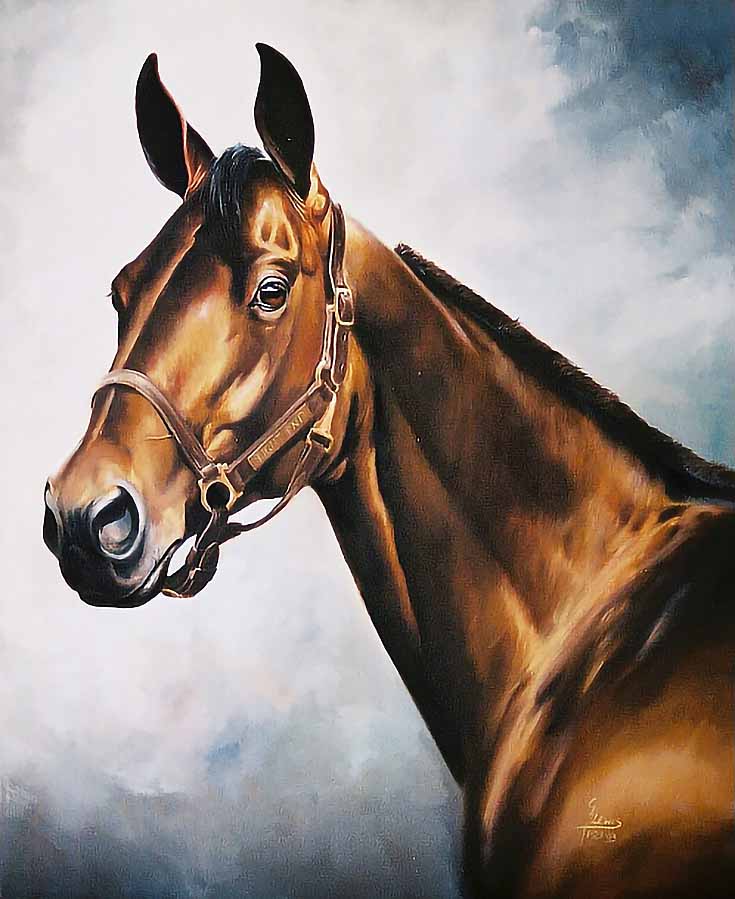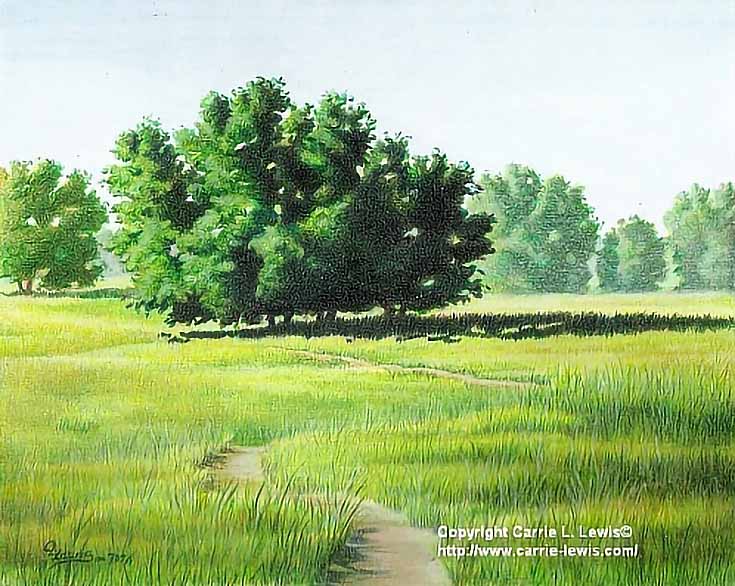A lot of artists I speak with are uncertain about whether or not their images are safe online—and truthfully, it’s a valid concern. However, there are a few ways you can protect your images (and your copyright) if you decide to put your artwork photos on the internet.
Here are 8 of the most common ways to prevent image theft online:
1. Start with low resolution images
The internet is set up to handle high and low resolution images. If you put up high resolution images, not only are you increasing the loading time for your pages but you’re also inviting the unscrupulous to download and print your images.
The best resolution settings are from 72 to 96 dots per inch (dpi). These images load quickly, look great, and print poorly.
2. Keep your images small
Image size is determined by pixels. (For example, an image that’s 300 pixels wide is smaller than an image that’s 800 pixels wide.)
The advantage to smaller images is that they load faster and print small. When they’re enlarged, they become pixilated and grainy, which makes them unsuitable for printing for resale (or anything else for that matter).
3. Use portions of images
You can always crop your image to show just a portion of the overall design. Depending on your artwork, this may or may not be an option. The cropped version may still be subject to copying, so I don’t find it to be a very workable option for anything but thumbnails.
Here’s an example of how that looks. This is one of my full images:
And here’s a cropped version:
You can either do the cropping yourself using photo editing software, or let whatever website builder you use do it. Many platforms now provide at least three standard size options and automatically scale or crop your images depending on the size you choose.
4. Add a copyright notice
Granted, this will only stop the people who already obey the laws. Anyone determined to steal your work will steal it no matter what type of copyright notice you use. But if you include a copyright notice on each image and make it prominent enough, people who might not be aware of the law might take a second to rethink what they’re about to do.
The text in white at the bottom of the image are my copyright notice:
I used to include only my name, but added my web address after finding images copied with the copyright notice intact. This doesn’t keep people from stealing, but at least other people know where the images came from and can find me if they wish!
5. Use a watermark
Your watermark could be a copyright notice or a simple logo. Usually, a watermark covers much of the image with a semi-transparent logo or word that makes the image less useful without totally obscuring it. You can add watermarks with most photo manipulation programs, like this:
In the illustration above, I’ve set the watermark to show up in red so you could see it, but most are either white or black.
6. Make it easy for people to contact you
This might seem counter-intuitive, but if you make it easy for people to contact you, they’re more likely to ask for permission to use your work. Even if you don’t want to give permission, decline politely and without creating barriers between you and a potential customer.
NOTE: You could also make low resolution images available at a low cost for people who want things like desktop or screen saver images. Not only does this give you another avenue of possible income; you may gain a sale of original work down the road.
7. Take action when you find a violation
Whenever you find someone using your work without permission, send them a polite email explaining who your are, that they’re using your work without permission, and asking them to take the work down. Most of the time, they will not be aware that they’ve done anything wrong and will do as you ask. At least that has been my experience.
Give them a chance to comply before hitting them with both barrels and a nasty, legal-sounding email. 24 to 48 hours is a good time period, since many people many not have direct access to their websites.
If that doesn’t work, have a lawyer send a notice. Most of those who don’t respond to your polite email or letter will most likely respond to a letter written on legal letterhead.
8. Disable the right-click function
If you manage your own website, and especially if you use WordPress or another popular platform, you may have the option to disable right-clicking on your images. This makes it a bit harder for people to save your images to their devices. (They can still save it using a screenshot, however.)
Unfortunately, the people who are most determined to steal from you will find a way to steal from you no matter what you do. I encourage you to do everything you can to protect your images online, but be aware that some people will find a way around your safeguards. If that’s more than you want to deal with, you may want to keep your work offline, or simply make sure that your images are small enough that those thieves can’t sell your artwork themselves, even if they do steal it.
We live in a world in which people think anything that’s online is free of charge and can be downloaded and used for whatever they want. As artists, I believe it’s part of our calling to educate the public to at least ask first, before turning your beautiful painting into a “free” greeting card or wallpaper.
This post may contain affiliate links.




